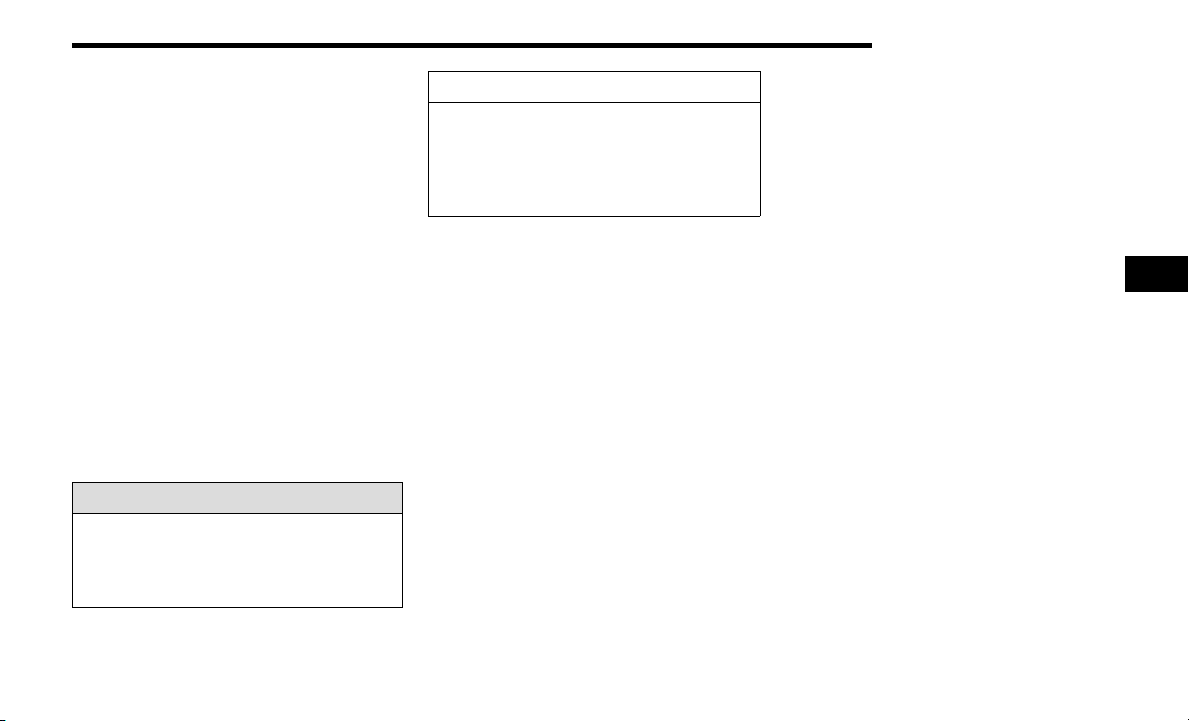Loading ...
Loading ...
Loading ...

STARTING AND OPERATING 145
The following indicators should be used to ensure that you
have properly engaged the transmission into the PARK
position:
When shifting into PARK, pull the gear selector toward
you and move it all the way counterclockwise until it
stops.
Release the gear selector and make sure it is fully
seated in the PARK gate.
Look at the transmission gear position display and
verify that it indicates the PARK position (P).
With the brake pedal released, verify that the gear
selector will not move out of PARK.
REVERSE (R)
This range is for moving the vehicle backward. Shift into
REVERSE only after the vehicle has come to a complete
stop.
NEUTRAL (N)
Use this range when the vehicle is standing for prolonged
periods with the engine running. The engine may be
started in this range. Apply the parking brake and shift the
transmission into PARK if you must exit the vehicle.
DRIVE (D)
This range should be used for most city and highway
driving. It provides the smoothest upshifts and downshifts,
and the best fuel economy. The transmission
automatically upshifts through all forward gears.
When frequent transmission shifting occurs (such as
when operating the vehicle under heavy loading
conditions, in hilly terrain, traveling into strong head
winds, or while towing a heavy trailer), select TOW/HAUL
mode or use the Electronic Range Select (ERS) shift
control to select a lower gear range
Ú page 143. Under
these conditions, using a lower gear range will improve
performance and extend transmission life by reducing
excessive shifting and heat buildup.
If the transmission temperature exceeds normal operating
limits, the powertrain controller will modify the
transmission shift schedule and expand the range of
torque converter clutch engagement. This is done to
prevent transmission damage due to overheating.
If the transmission becomes extremely hot or is in danger
of overheating, the Transmission Temperature Warning
Light may illuminate and the transmission may operate
differently until the transmission cools down.
NOTE:
Use caution when operating a heavily loaded vehicle at
low speeds (such as towing a trailer up a steep grade, or
in stop-and-go traffic) during hot weather. In these condi-
tions, torque converter slip can impose a significant addi-
tional heat load on the cooling system. Downshifting the
transmission to the lowest possible gear (when climbing a
grade), or shifting to NEUTRAL (when stopped in heavy
traffic) can help to reduce this excess heat generation.
During cold temperatures, transmission operation may be
modified depending on engine and transmission
temperature as well as vehicle speed. This feature
improves warm-up time of the engine and transmission to
achieve maximum efficiency. Engagement of the torque
converter clutch is inhibited until the transmission fluid is
warm
Ú page 147. On Pickup models with 68RFE
transmission, top overdrive gear is also inhibited until the
transmission fluid is warm, and during extremely cold
temperatures (-16°F [-27°C] or below), operation may
briefly be limited to first and direct gears only. On trucks
with AS69RC transmission, FIFTH and SIXTH gears may be
inhibited briefly on cold starts below 41°F (5°C), and
during very cold temperatures (-4°F [-20°C] or below),
operation may briefly be limited to third gear only. During
this condition, the ability of the vehicle to accelerate under
heavily loaded conditions may be reduced. In all cases,
normal operation will resume once the transmission
temperature has risen to a suitable level.
WARNING!
Do not coast in NEUTRAL and never turn off the ignition
to coast down a hill. These are unsafe practices that
limit your response to changing traffic or road
conditions. You might lose control of the vehicle and
have a collision.
CAUTION!
Towing the vehicle, coasting, or driving for any other
reason with the transmission in NEUTRAL can cause
severe transmission damage.
For Recreational Towing
Ú page 219.
For Towing A Disabled Vehicle
Ú page 366.
4
23_DJD2_OM_EN_USC_t.book Page 145
Loading ...
Loading ...
Loading ...